Need Pesticides?
We understand that people hold differing views on the use of pesticides. So, let’s take a look at why they are used and what their benefits are.
Just as people take medicine when they are ill, plants can be treated with pesticides when they are affected by diseases, pests or weeds. Pesticides that manage pests are usually called insecticides. Fungicides manage diseases, nematicides manage nematodes and herbicides manage weeds.
Here are some examples:
|
|
Phytophthora infestans, a disease that caused the potato famine in Ireland in 1850, is still a key disease today, especially under warm and humid weather conditions. |
|
|
A tomato root-infested by nematodes (upper plant) in comparison to a healthy root (plant below). Experts estimate that 12% of crops worldwide are lost to nematode infestation, adding up to US$100 billion in economic loss. Source: Society of Nematologists. |
|
|
A broad variety of weeds compete with cultivated plants for nutrients, water, and light. Some important and difficult to control broad-leaved weeds include catchweed (Gallium aparine), melde (Chenopodium album), or cursed thistle (Cirsium avensis); others are grasses, such as black grass, couch grass (Elymus repens) (see image), or rye grass (Lolium arundinaceum), to name just a few. |
You might know this from your garden or balcony: if your tomatoes or roses are damaged by pests or fungal diseases (which often show up as mold), you might use a household remedy or simply pick the pests off – and hope for the best. Farmers cannot hope. They depend on the quality and quantity of the produce they grow, and so do we as we eat the harvested produce.
Plant protection methods can have many forms
These can be chemical (this is what people mostly call “pesticides”) or biological (“biopesticides”) products, or include beneficial insects that prey on the pests. To protect plants from weeds, mechanical methods can also be used. These include hand weeding or machine ploughing.
Integrated crop management systems, which include crop rotation, as well as the use of crop varieties less susceptible to pests or diseases, may help avoid infestations or the establishment of weeds in the first place, thus reducing the use of pesticides.
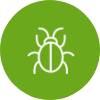
Biological Control
Natural predators such as ladybirds may help by eating aphids.

Mechanical Methods
Ploughing the cropland can help reduce weed infestations.

Seed Variety
A wheat variety less susceptible to aphids.

Chemical Method
The pesticide you put on your crop.

Cultural Methods
Crop rotation systems avoid the build-up of pathogens.
Farmers (or gardeners) choose a solution which depends on the crop, region, soil, climate or farming system they use.
What is organic crop production?
Often, people think that "organic agriculture" means "pesticide-free" or "chemical-free". However, organic farmers are allowed to use a variety of natural pesticides on their crops. So, what does organic agriculture mean? It means that pesticides applied in such organic systems must be derived from natural sources, e.g. biopesticides, copper or sulfur.
Organic or conventional? Both fine!
At Bayer, we are committed to and encourage diversity in agricultural practices and recognize the importance of combining diverse farming practices.
Conventional and organic foods are equally nutritious, as an exhaustive review from Stanford University confirmed. Multiple crops were tested over four decades and eating organic foods gave no health or nutritional benefits compared to conventional foods.
Research shows the benefits of eating a healthy diet outweigh any perceived risk of pesticide residues in food. Residues are found in both organic and conventional foods; however, these are insignificant compared to the naturally occurring toxins that are found in plants we eat.

Benefits of pesticides for the environment: growing more food on limited land
Thanks to highly efficient and productive agriculture, less land per person are needed for agricultural production across the globe. This allows land to be used for more food production to feed an increasing population, or for other purposes, such as housing, road construction or forests.
One study shows that agricultural technologies (e.g. seed varieties, pesticides and irrigation) saved 970 million hectares from land-use change in the 40 years following 1961. That’s a surface area larger than the USA.
Total land of the US: 940 million hectares

Agricultural technologies contribute to making agriculture more effective and help to spare land:
-
E.g. doubling of wheat production 1960-2007.
-
Since 1961, about 970 million hectares of natural habitats spared from conversion to agricultural land internationally.
Benefits of pesticides to human health and human well-being
A diet rich in fruit and vegetables can reduce the risk of various human diseases. Protecting our crops from fungal diseases such as molds additionally contributes to healthier fruit and vegetables, which in turn benefits human health.
Why’s that? Fungi can produce natural substances such as mycotoxins that are toxic to humans and animals. For example, aflatoxin produced by Aspergillus fungi is one of the most important mycotoxins in food production. Acute toxic doses cause liver necrosis, nausea and vomiting. Another important toxin is zearalenone, which affects the hormonal balance of humans. Some fungicides have shown to reduce these natural toxins by up to 50% under field conditions, depending on climatic conditions.
Every time you use an insect repellent to prevent mosquito bites or a product to keep your kitchen free of ants, you use a pesticide targeted at these small pests.
You probably don't associate this with the use of an insecticide in agriculture, but some of the active ingredients are the same. Pesticides repel or control some unpopular insects such as cockroaches and mosquitoes. We also count on restaurants, hospitals, playgrounds or shopping malls to be free of these unpopular insects or rodents. We’ve got used to it, yet probably don't associate it with the use of pesticides.
Pesticides’ Role in Productivity and The Link to Food Cost
Consumers expect to have access to safe and affordable food of good quality all year round. To continue to be able to produce sufficient quantities of quality produce requires that crops are protected. This offers benefits for the viability of farms and the livelihood of the farmers, while also translating into affordable food prices for the consumer.
Produce With and Without Treatment
If the harvest is 100% by using crop protection, you can expect the following yields without using any treatment:

Pesticides and other agricultural technologies can help to avoid food loss in the field or in storage
Some 20-40% of the world's potential crop production is already lost annually because of the effects of weeds, pests, and diseases (FAO). These crop losses would double if existing pesticide uses were abandoned, significantly increasing food prices and waste.
After harvest, the produce is also subject to infestations by pests or diseases. Bugs, rodents or mold can harm grains. Pesticides used in grain or fruit storages, for instance, can prolong the viable life of the produce and protect it so it is safe to eat while preventing huge post-harvest losses from pests and diseases.
Despite the protection of crops in the field and after harvest, many foods are lost when people throw them away because, for example, they have expired. This is an aspect that must also be taken into account to make food production as efficient as possible. After all, food waste is also an unnecessary waste of natural resources such as energy, water, and soil.
Approximately one-third of the food produced for human consumption is lost or wasted along the entire food chain.
Protecting Crops from Invasive Species
Invasive alien species are one of the main causes of biodiversity loss worldwide. Today, non-native plants and animals, as well as pests, weeds, and diseases, are spreading more rapidly by land, ships and airplanes. If conditions are good, they become invaders (only one out of every 1000 species arriving will become invasive).
They are harmful to farming, as well as to human health and well-being. Damage from invasive species has been estimated at US$ 1.4 trillion globally each year, most of which relate to agriculture – especially crop production (Pimentel et al., 2001).
In farming, some of the most common crop pests and diseases are not native to the countries that they are now found in. They affect the native ecosystem because they often have no natural enemies. Some examples of these invaders include:
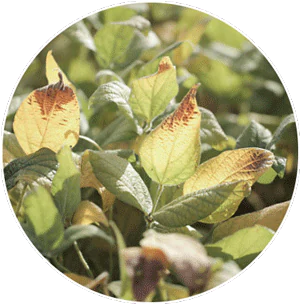
Asian Soybean Rust (ASR) (Phakopsora pachyrhizi) – affects the leaves of soybean plants, eventually damaging the whole plant.
It has seriously impacted soybean yields in infected areas – in some cases, even causing up to an 80% loss. Source
Having first been seen in Asia, soybean rust has since spread to many countries worldwide – though it is an even more serious problem in tropical and subtropical areas in Asia, Africa, Australia and South America, as it favors humid and warm environments.
Source

An invasive pest that is profoundly changing the landscape of the Mediterranean is the red palm weevil (Rhynchophorus ferrugineus).
The beetle is native to tropical East Asia, where it is even bred as food – the larvae are considered a delicacy in Southeast Asian countries.
In recent decades, the beetle has spread rapidly across numerous regions, including the Mediterranean. Date palms and canary palms are part of the landscape in much of the Mediterranean area. The palms, however, cannot protect themselves from this exotic beetle. The larvae perforate and eat the heart and trunk of the palms and inevitably kill them. You may have already noticed dead palm stumps. Without preventative control measures, the palm trees in the Mediterranean cannot be saved. Source
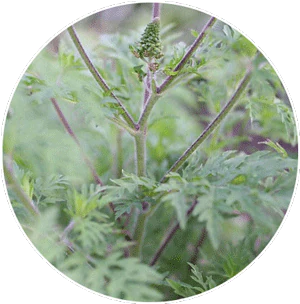
Ragweed (Ambrosia artemisiifolia) can cause allergy symptoms in people – this includes itchy eyes and sneezing, but sometimes extends to breathing difficulties and eczema.
This species is native to North America, was accidentally introduced into France, and then spread to Switzerland, Germany and Hungary. Ragweed seeds can live in the ground for up to four decades – and one plant alone produces around 3000 new seeds.
Ragweed mainly affects sunflower and maize fields, although it is sometimes seen on roadsides and in wheat fields. Source
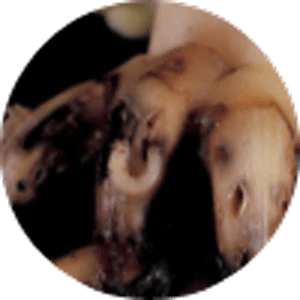
The larvae of the Western corn rootworm (Diabrotica virgifera) damage the corn’s roots, which disables the plant’s ability to transport water and nutrients.
Adults feed primarily on corn silk, pollen and kernels. The Western corn rootworm began to spread in North America during the latter part of the 20th century, and was introduced in Serbia, Europe, in 1992. Source
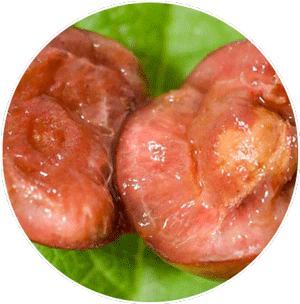
The European cherry fruit fly (Rhagolethis cerasi) is native to Europe where it causes significant damage to its principal host, the cherry fruit (Prunus spp.).
If the pests remain uncontrolled they can cause losses of 100% of the harvest. The European cherry fruit fly was first observed in Canada in 2016. Source
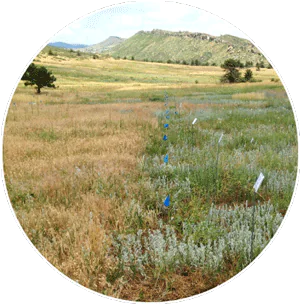
Cheatgrass (Bromus tectorum), is an invasive winter annual grass that, along with other grasses, is rapidly spreading across the western US.
It originates from the Mediterranean area. Since these grasses grow in winter and early spring, they out-compete native plants by taking moisture and nutrients from the soil before the native plants even start growing. In this way, they reduce biodiversity and wildlife habitat, while contributing to more frequent, more intense wildfires, since they form dry, dense stands which pick up wildfires more quickly. Source
These pests and diseases can destroy vast amounts of crops – and, as a result, farmers can end up losing out economically. This is why farmers control these invasive species with pesticides.
Protecting Crops in A Sustainable Way
We are faced with the challenge of having to feed a growing world population while ensuring the sustainable use of our natural resources. Every year, the world population is expanding by 83 million people – equivalent to the current population of Germany. Since the 1960s, the world population has grown by 5.5 billion people, rising from 2 billion to 7.5 billion.
As a consequence, the arable land available for food production per person has declined – and it will continue to decline.
Arable Land
The earth has lost a third of arable land in the past 40 years. This rate far outstrips the pace of natural processes to replace diminished soil. This calls for much more efficient usage of the land, as well as protective measures to protect the precious arable land and natural habitats.
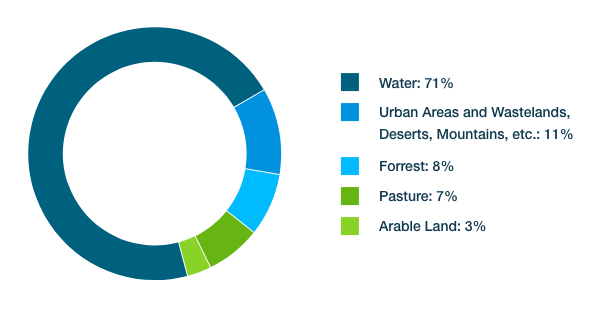
However, land availability is just one challenge. There are many others that influence food production, such as a changing climate (especially increasingly erratic weather conditions, related water scarcity, and poverty) or changing dietary habits (such as eating more meat).
Changing climate and erratic weather conditions
-
Excessive Heat
-
Loss of natural resources
-
Drought
-
Excessive precipitation/flooding
-
New pest and disease pressure
Crop Protection Benefits Everyone

Farmers can harvest a healthy crop

Consumers are able to buy high-quality, fresh and safe food all year round

Making crop production more efficient on the available land allows for other land use purposes, such as conservation and urban needs.
















